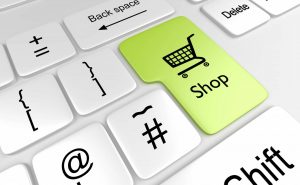 The final stage of the marketing funnel is not when the sale happens. It actually continues beyond the point-of-sale to include product delivery and post-purchase. We explored this recently further in our article on digitizing referral marketing.
The final stage of the marketing funnel is not when the sale happens. It actually continues beyond the point-of-sale to include product delivery and post-purchase. We explored this recently further in our article on digitizing referral marketing.
Careful development of how a customer makes a purchase, receives their purchase, and connects with a company after the purchase can fundamentally change how a company operates and grows.
The Digital Point-Of-Sale
A customer is 4 times more likely to defect to a competitor if the problem is service-related than price- or product-related.
—BAIN & COMPANY
Companies need to be in a state of ongoing improvement today to continue growing. Stagnation in development results in stagnation in revenues (and yet, stagnation in the rising costs of doing business may not stop).
At the decision stage of the buying process, you are gaining a new customer. You want to ensure that this purchasing process is easy, frictionless, and functional.
The point-of-sale online is the checkout process. Before you worry about the latest idea on adding an element to the checkout process that will boost conversions, be sure that the checkout is functional and clear on each step of the process. We need to remove bottlenecks where people quit due to confusion.
Only after establishing that there is a simple, clear checkout process can you start to identify ways to boost conversions, such as:
- Social proof usage
- Upsell additions
- Credibility badges
There’s a tremendous amount of psychological principles that can go into an online checkout process. We won’t get into them all here. Simply focus on the principles above and remember to constantly iterate.
As a final note, your online checkout process should integrate with your customer relationship management software.
Digitized Product or Service Delivery
70% of buying experiences are based on how the customer feels they are being treated.
—MCKINSEY
Making sales and taking payments online is a basic but fundamental need for today’s digital world. Moving beyond that and digitizing the product or service delivery and usage online is the next step. There are many “innovative” businesses built in this way. However, we will continue to see more traditional businesses make the transition into digitization as the market demands the change and economics justify the move.
This is highly customized to how an individual business operates:
- Products: We typically see this with information businesses as fewer training companies operate face-to-face and more operate with online training courses. The same is offered through higher education.
- Services: Professional service providers offer client portals that hold documentation and account updates in the cloud. What was previously done face-to-face has moved to online. Physical is going digital.
The key principle here remains the same as with the point-of-sale: make it easy, reduce any friction, and be sure to stay in contact with your customer. Failure to communicate is an awful way to begin a relationship.
Maximize the New Customer Relationship
It costs 6–7 times more to acquire a new customer than retain an existing one.
—BAIN & COMPANY
How can you let your new customer know they are appreciated? Can you do something to show them that you’re going to champion them to be their very best as a beloved customer of yours?
Once a customer receives your product or service and puts it to use, there’s a chance to boost the relationship ahead:
- Feature the new customer and share their story
- Develop a case study around them
- Ask for referrals or a testimonial
- Provided added value in the form of training, coaching or general advice
Whatever it is that you can do to enhance their use of the product or deepen the connection with the company, implement it systematically at this stage. It’s typically easiest to seek out this opportunity by identifying what makes the difference between a casual user or super fan, or between someone who uses the service regularly or someone who fades away.
As you can imagine, this not only provides an opportunity to create someone who will champion your brand, but also a more profitable customer by reducing turnover (churn) and increasing likelihood that they will return.
Much of this can be handled through automation, whether that be with an autoresponder or through updating your teams via a CRM system. Design the process to function at its best for the customer first, then iterate as needed for the opportunity to scale!
Put This Article To Practice. Ask Yourself:
- Is your closing process as seamless as possible? Do you have room to remove friction and add value and credibility?
- How can you ensure your delivery is seamless? Is it already as good as it can be? What can be improved?
- How can you “wow” your new customer? What would show them they’re part of your family now?
This article is an adapted excerpt from “Getting Digital Marketing Right” (David J. Bradley, 2015). See other excerpts from the book here.


